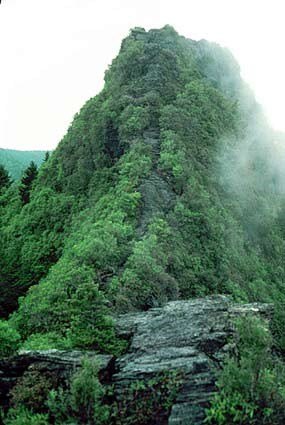Welcome to the fascinating world of the Smoky Mountains! These majestic mountains were formed millions of years ago through a series of geological processes. The Smokies, as they are lovingly called, boast breathtaking views, diverse wildlife, and countless opportunities for outdoor adventures. So sit back, relax, and let’s explore the unique history and beauty of the Smoky Mountains together! How were Smoky Mountains formed?
If you’ve ever wondered about the origin of the majestic Smoky Mountains, you’re in the right place. Sit back, relax, and let’s take an in-depth look at how these stunning mountains came to be.
The Geological Formation of the Smoky Mountains
Let’s start with the basics. The Smoky Mountains, located in the southeastern United States, are part of the larger Appalachian Mountain Range. These mountains are known for their misty blue appearance, which is caused by a combination of factors such as vegetation, temperature, and altitude.
Tectonic Plate Movements
The geological formation of the Smoky Mountains began millions of years ago when tectonic plates collided. In this case, it was the collision of the North American Plate with the African Plate that played a crucial role in shaping the landscape we see today. These plates came together, pushing against each other and causing the Earth’s crust to fold and uplift.

This image is property of mangeolassoc.org.uk.
The Role of Erosion in Mountain Formation
While tectonic plate movements set the stage for mountain formation, erosion also played a significant role in shaping the Smoky Mountains. Over millions of years, natural forces such as water, wind, and ice worked to carve out the rugged terrain we see today.
Water Erosion and River Systems
One of the most powerful agents of erosion is water. Rivers and streams flowing through the Smoky Mountains have carved out deep valleys and gorges over time. The force of water, along with sediment carried downstream, has gradually shaped the landscape, creating the distinct features of the Smokies.
Wind and Ice Erosion
In addition to water, wind and ice have also contributed to the erosion of the Smoky Mountains. As glaciers moved across the land during the Ice Age, they scoured the surface of the mountains, shaping them into their current form. Similarly, wind has played a role in sculpting the rugged peaks and ridges of the Smokies.

This image is property of mangeolassoc.org.uk.
The Unique Characteristics of the Smoky Mountains
What sets the Smoky Mountains apart from other mountain ranges? Let’s explore some of the unique characteristics that make these mountains so special.
Biodiversity
The Smoky Mountains are one of the most biologically diverse regions in the United States. With over 19,000 documented species of plants and animals, this area is a hotspot for biodiversity. The wide range of habitats, from old-growth forests to high-elevation meadows, supports a rich array of flora and fauna.
Climatic Conditions
The Smoky Mountains are also known for their unique climatic conditions. The high levels of rainfall and humidity in the region create a perfect environment for the growth of lush vegetation, earning the mountains their “smoky” appearance. The misty fog that often shrouds the peaks adds to the mystical allure of the Smokies.
Cultural Heritage
In addition to their natural beauty, the Smoky Mountains are rich in cultural history. The Cherokee and other Native American tribes have long called these mountains home, leaving behind a legacy of traditions and stories. The Appalachian culture, with its deep-rooted connection to the land, continues to thrive in the communities nestled in the valleys of the Smokies.

This image is property of assets.answersingenesis.org.
Exploring the Smoky Mountains
Now that you have a better understanding of how the Smoky Mountains were formed, it’s time to explore this breathtaking region for yourself. Whether you’re a hiker, photographer, or nature lover, there’s something for everyone to discover in the Smokies.
Hiking Trails
The Smoky Mountains boast over 800 miles of hiking trails, ranging from easy strolls to challenging treks. Whether you want to see cascading waterfalls, panoramic vistas, or vibrant wildflowers, there’s a trail for every interest and skill level. Be sure to check trail conditions and weather before heading out, and always practice Leave No Trace principles to help preserve this pristine wilderness.
Wildlife Viewing
The Smoky Mountains are home to a diverse array of wildlife, including black bears, white-tailed deer, and salamanders. Birdwatchers will also find plenty of species to spot, from woodpeckers to warblers. Keep your eyes peeled and your camera ready as you explore the forests and meadows of the Smokies.
Scenic Drives
For those who prefer a leisurely pace, the Smoky Mountains offer a variety of scenic drives that showcase the beauty of the region. The Newfound Gap Road and the Clingmans Dome Road are popular routes that provide stunning views of the mountains, forests, and valleys. Don’t forget to stop at one of the many overlooks for a photo op or a picnic lunch.

This image is property of www.nps.gov.
Conclusion
The Smoky Mountains are a true natural wonder, with a rich geological history, diverse ecosystem, and captivating beauty. From their formation millions of years ago to the present day, these mountains have stood as a testament to the power of nature and the resilience of the land. So next time you gaze upon the misty peaks of the Smoky Mountains, remember the ancient forces that shaped this awe-inspiring landscape. Happy exploring!

This image is property of www.e-education.psu.edu.

